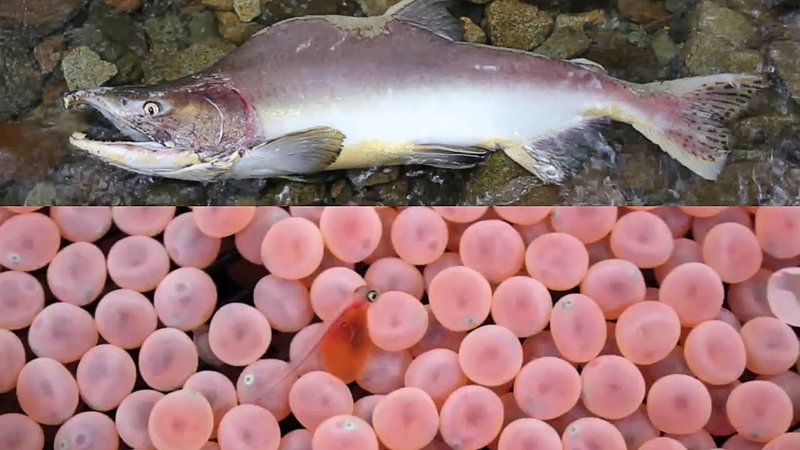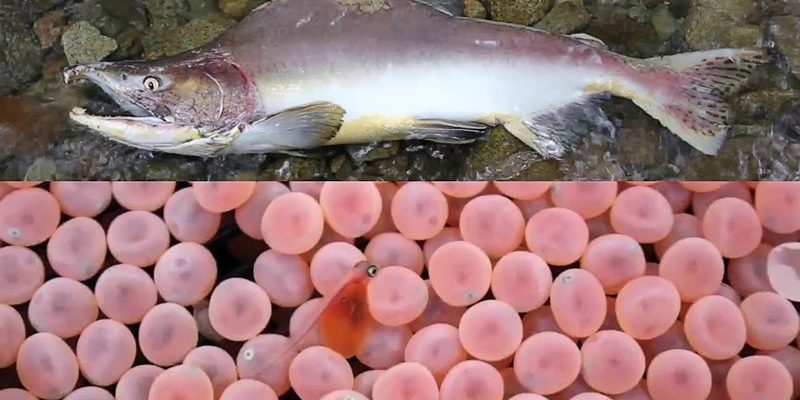
Imagine salmon as nature’s determined travelers. Each year, they make a pilgrimage back to their birthplace to spawn. This incredible journey is not just about survival; it’s about carrying on their lineage. Understanding how salmon breed and reproduce helps us grasp the importance of their habitats and the ecosystems they thrive in. So, let’s explore the fascinating world of salmon reproduction!
Life Cycle of Salmon
Salmon have a unique life cycle that includes four distinct stages: egg, alevin, fry, and adult. It all starts when a female salmon lays her eggs, usually in a freshwater river bed. She chooses a clean, gravelly area to dig a nest, or a “redd,” where she deposits thousands of eggs. A male salmon then fertilizes these eggs. This is like a big family reunion, ensuring that the next generation has a fighting chance in the wild.
Once the eggs are fertilized, they begin their transformation. After a couple of months, they hatch into tiny fish known as alevins. These little guys are still attached to their yolk sacs, which provide them with nutrients. If you’ve ever seen a baby bird clutching tightly to its nest, you’ll get the picture. As they grow, they will absorb the yolk and begin their journey towards becoming fry.
Choosing the Right Habitat
One of the keys to successful salmon reproduction is selecting the right habitat. Salmon instinctively return to the exact stream where they were born to lay their eggs. This attachment to their birthplace is crucial; the right environment ensures that the eggs have the best chance of survival. Clean, cold rivers with ample gravel beds provide a safe haven for their offspring.
You might be wondering how the salmon know where to go. It’s all about their keen sense of smell! Salmon can detect specific chemicals in the water that signal they are close to their home stream. It’s like having a built-in GPS, guiding them back to where their journey began.
The Role of Spawning
Spawning is when salmon reproduce, and it’s an event filled with action. After the female lays her eggs, she covers them with gravel. This protective act is like tucking her little ones into bed, ensuring they stay safe from predators. Males compete for the attention of the females, showcasing their strength and agility, which is a fascinating social dynamic.
During this time, the salmon undergo some physical changes. Their colors become more vibrant and their bodies more streamlined. You can think of it as a kind of transformation—like putting on a special outfit before the big event. These changes help them attract mates and increase their chances of successful reproduction.
Challenges in Reproduction
Salmon face numerous challenges during their reproduction process. One of the biggest threats is habitat loss. Pollution, dam construction, and overfishing disrupt their migratory patterns, making it harder for them to reach their spawning grounds. Imagine trying to navigate a maze with obstacles at every turn—this is what salmon deal with every year.
Predators also pose a significant risk, especially during the vulnerable egg and alevin stages. Birds, bears, and even other fish see these tiny creatures as tasty snacks. This is why the female salmon’s act of burying her eggs under gravel is so vital; it gives them a fighting chance against hungry predators.
The Journey to the Ocean
Once the fry hatch and grow, they eventually make their way to the ocean. It’s a pivotal moment in their lives, as they will spend several years in saltwater before returning to freshwater to spawn. During this time, they undergo a remarkable transformation, adapting to life in the vast ocean.
As they venture into the sea, they face new challenges—everything from finding food to avoiding larger fish. It’s like stepping into a new world filled with both adventure and danger. The ocean environment shapes them into the robust adults that will eventually return to their home streams.
Returning Home: The Cycle Continues
Years later, mature salmon begin to feel the call of their home streams. They swim thousands of miles upstream, often battling strong currents and obstacles along the way. This return journey is not just instinct; it’s a life-or-death mission to reproduce before their time runs out.
Once they reach their spawning grounds, they lay eggs and the cycle starts all over again. It’s a beautiful, albeit brutal, reminder of nature’s relentless rhythm. Each generation of salmon plays a crucial role in the ecosystem, supporting not just their own species but also the plants and animals that rely on them.
The Importance of Conservation
With all the challenges salmon face, conservation efforts are essential to ensure their survival. Protecting their habitats, restoring waterways, and regulating fishing practices can make a significant difference. Local communities play a vital role in these efforts, as they are often the first to notice changes in salmon populations.
You might be surprised to learn how small changes can positively impact salmon reproduction. Simple actions like planting trees along riverbanks, reducing pollution, and supporting sustainable fishing can help create a healthier environment. It’s about working together to keep this beautiful cycle of life thriving.
In conclusion, understanding the breeding and reproduction of salmon gives us a richer appreciation for these remarkable fish and their journey. From their life cycle stages to the challenges they face, every aspect of their reproduction is a testament to nature’s resilience. By supporting conservation efforts, we can help ensure that future generations of salmon will continue to thrive in our rivers and oceans. So the next time you enjoy a salmon dish or see them leaping upstream, remember the incredible journey they undertake to ensure their existence.

